Worthington Farm Plan
Unit A of the 2350 Baldwin Condominium (Condominium Map Number 5858)
TMK: (2) 2-5-003: 040 Unit A
Situate at Haliimaile, Makawao, Maui
Hawaii (2350 Baldwin Avenue #A
May, 2023
Introduction
Unit A of the 2350 Baldwin Condominium development is a 3.616 acre property running generally east-west at an average elevation of 1060 feet (1040-1080 ft. elev; W to E) on the northwest slope of Haleakala in Maui county, Hawaii (Figure 1). The Baldwin development includes 16 lots on 133 acres at the NW corner of Hali'imaile Road and Baldwin Avenue. Each lot in the subdivision is zoned AG; agricultural (Figure 2) and development of the property requires completion of a farm plan to be approved by the Maui County as required by Article 11, Hawaii State Constitution, Hawaii Revised Statutes, Chapter 205, and Maui County Code, Chapter 19.30A.
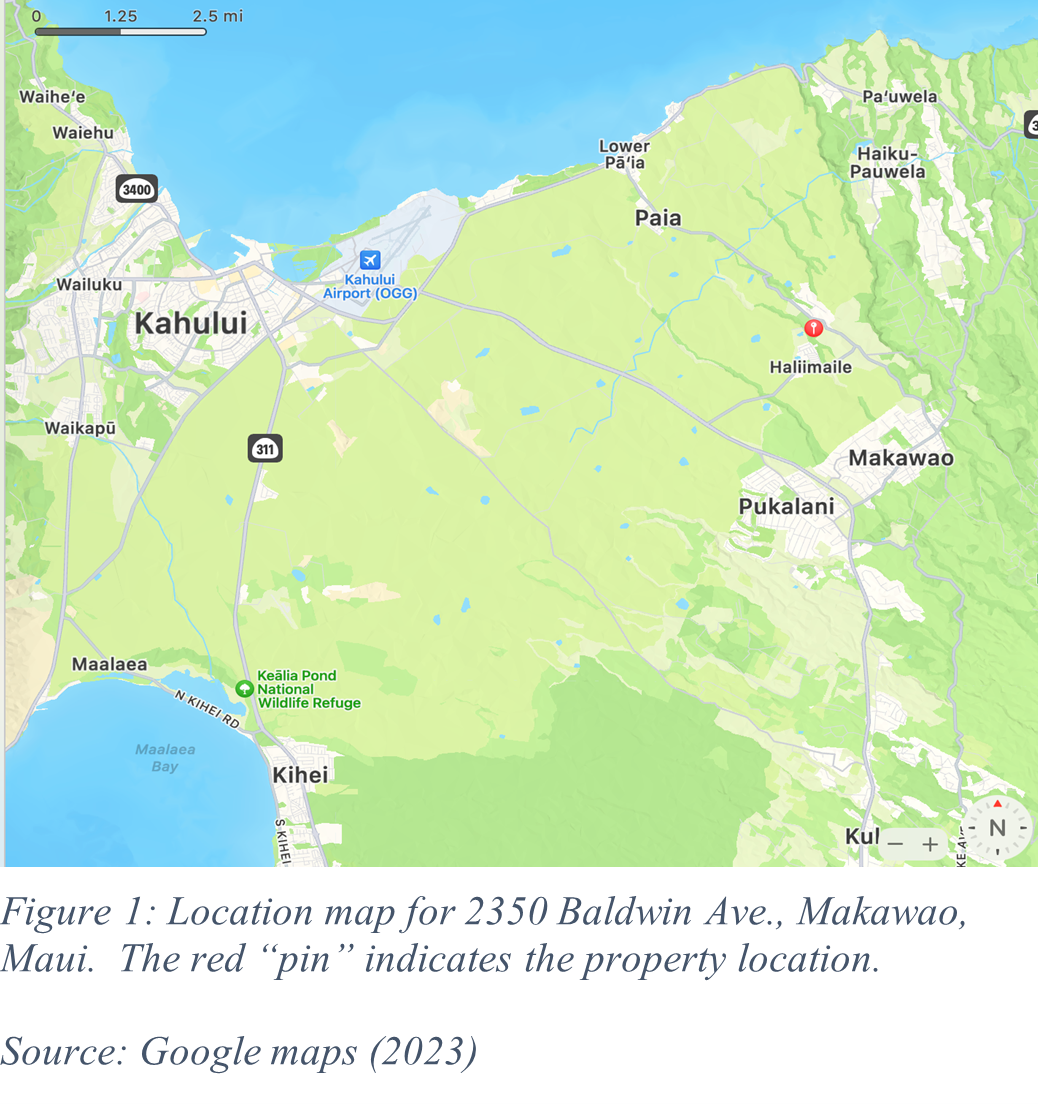 |
Each lot is required by county code to include agricultural use covering a minimum >50% of the property. This use can range from pasture to commercial agricultural production. The owner of this specific property is planning small-scale fruit production with plans to eventually market produce through farmers markets or local secondary retailers.
The intent is to create a small-scale fruit orchard utilizing three distinct genera of tropical fruits: Avocado, Mango, and Papaya.
The property is currently fallow, but recently became available for minimal grazing under an agreement between the owner and the neighboring property.
This document provides a general direction for development of a small-scale fruit orchard on the 3.6 acre property. Included are recommended varieties, spacing, soil considerations, irrigation requirements and management recommendations. |
Soils:
Soils on the property are exclusively Haliimaile series in the order Inceptisol; soils that exhibit minimal horizon development (SoilWeb: UC Davis). Typical soils are deep to very deep, and the A-horizon usually has a plow layer. Most, if not all of these soils were previously in sugarcane and/or other crops such as pineapple. The available water capacity is high. Permeability varies from moderately slow to moderately rapid, generally depending upon historic management of the site and the amount of organic matter remaining in the surface horizon. Runoff ranges from low to medium (Soil resource: UC Davis; Natural Resources Conservation Service: Ecological site VX158X01X401) (Figure 3).
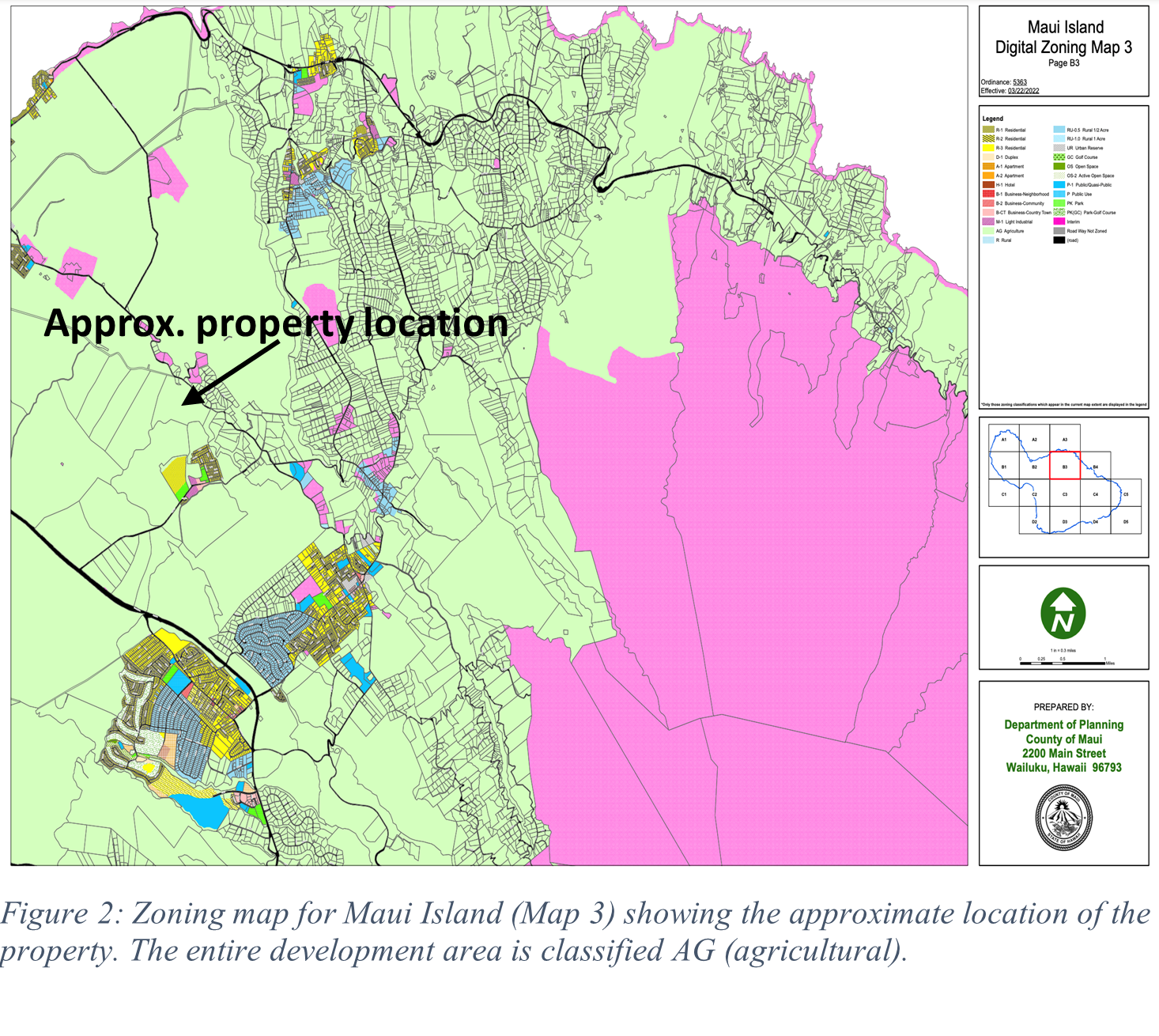
The soils formed from volcanic ash, or in materials derived from volcanic ash or basalt. Surface textures range from silty clay (most typical) to silty clay loam and clay. Type surfaces are typically covered with stones or cobbles.
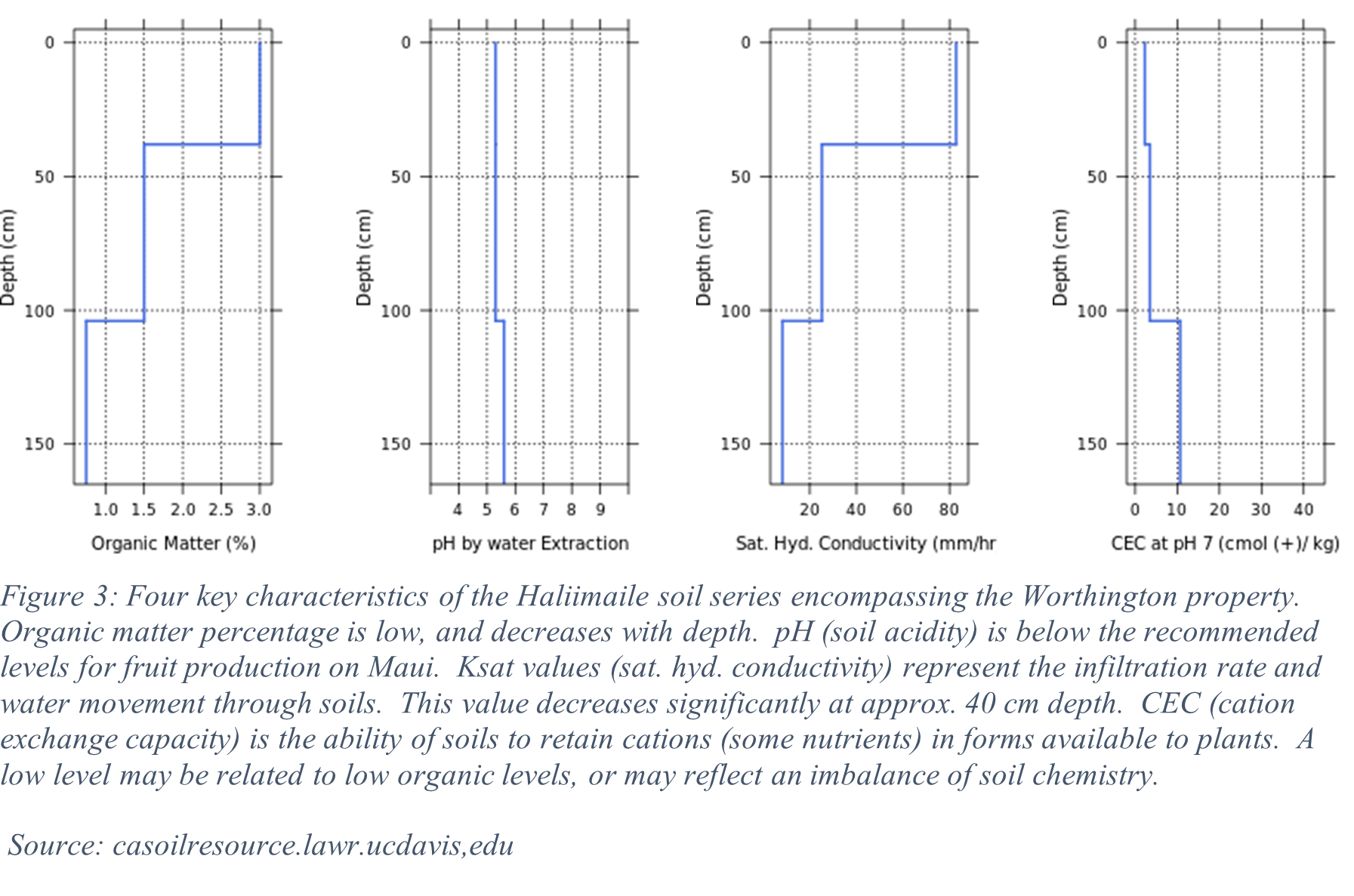
Soil reaction (pH, water) is slightly acidic to neutral in the upper horizons. Soil temperature regime is isohyperthermic; soil moisture regime is aridic. Mean annual temperature is about 71 deg. F., average January soils temperature is 68 deg F., and average July temperature is 74 deg. F.
A soil test completed in 2021 on an adjacent property indicates a low percentage of organic matter (2.4%) and a pH of 5.0.Soil tests on the Worthington property have not been completed.
Recommended Crops:
Agricultural production on the property will involve primarily three distinct genera of tropical fruit trees. Several species and varieties within each genera are available, but the list below includes four specific varieties recommended for the soils, exposure, and moisture levels typical on the property.
The tables below summarize some primary characteristics of recommended varieties. General crop information from the University of Hawaii Extension for each species is included in Appendix B.
Avocado: Persea americana, var. Sharwii (type B) P. americana var. Greengold (type A) (see Appendix)
Cultivar |
Season |
Race |
Flowering Type |
Bearing |
Tree size and form |
Oil content |
Flavor |
Shelf life |
Spacing |
Greengold |
Winter-spring |
M x G |
A |
Heavy, regular |
Small-medium |
>20% |
Excellent |
Good |
25-35 ft. |
Sharwii |
Winter-spring |
M x G |
B |
Moderate, regular |
Low, spreading |
20-24% |
Excellent |
Excellent |
25-35 ft. |
Mango: Mangifera indica L. var. Fairchild (see Appendix)
Cultivar |
Season |
Fruit Wt. |
Bearing |
Tree size and form |
Fruit quality |
Spacing |
Fairchild |
Early
(June - July) |
0.33 - 0.75 lbs |
Regular |
Small, spreading |
Excellent |
30-40 ft. |
Papaya: Carica papaya L. var Solo (type Kapoho) (see Appendix)
Cultivar |
Season |
Fruit Wt. |
Bearing |
Tree size and form |
Fruit quality |
Spacing |
Solo
Type: Kapoho |
Year round |
12-22 oz. |
Regular |
Tall, short lived perennial |
Excellent |
5-7 feet |
Irrigation:
The Baldwin development includes a high capacity private water system that provides each lot with two potable and two agricultural water meters. The size of the meters is unknown, and a topographic survey of the property (April 2023) did not identify meters or points of connection (POC) for an irrigation system at the orchard. However, fruit production is highly dependent on consistent monthly water availability, and development of a successful farm will require supplemental seasonal irrigation.
The University of Hawaii Extension has provided suggested annual water requirements for each type of fruit, recommending the quantity of water be distributed evenly throughout the year.
Avocado; 50 inches per year
Papaya; 40 - 60 inches per year
Mango; <60 inches per year
Average annual precipitation at Makawao, HI is 73 inches per year, with the majority occurring from October through April (Figure 4). As shown, supplemental irrigation will be most critical from May through September. To mitigate significant seasonal differences in precipitation rates, an irrigation system will be designed and constructed to even out water availability throughout the year.
Cover Crop:
Preparation of the site will require removal of the existing pasture, soil amendments, and construction of an irrigation system. These disturbances will create an opportunity for invasive and other undesirable vegetation to colonize the site. The use of a cover crop for weed control, nutrient cycling, aesthetics, and pollinator habitat is highly recommended.
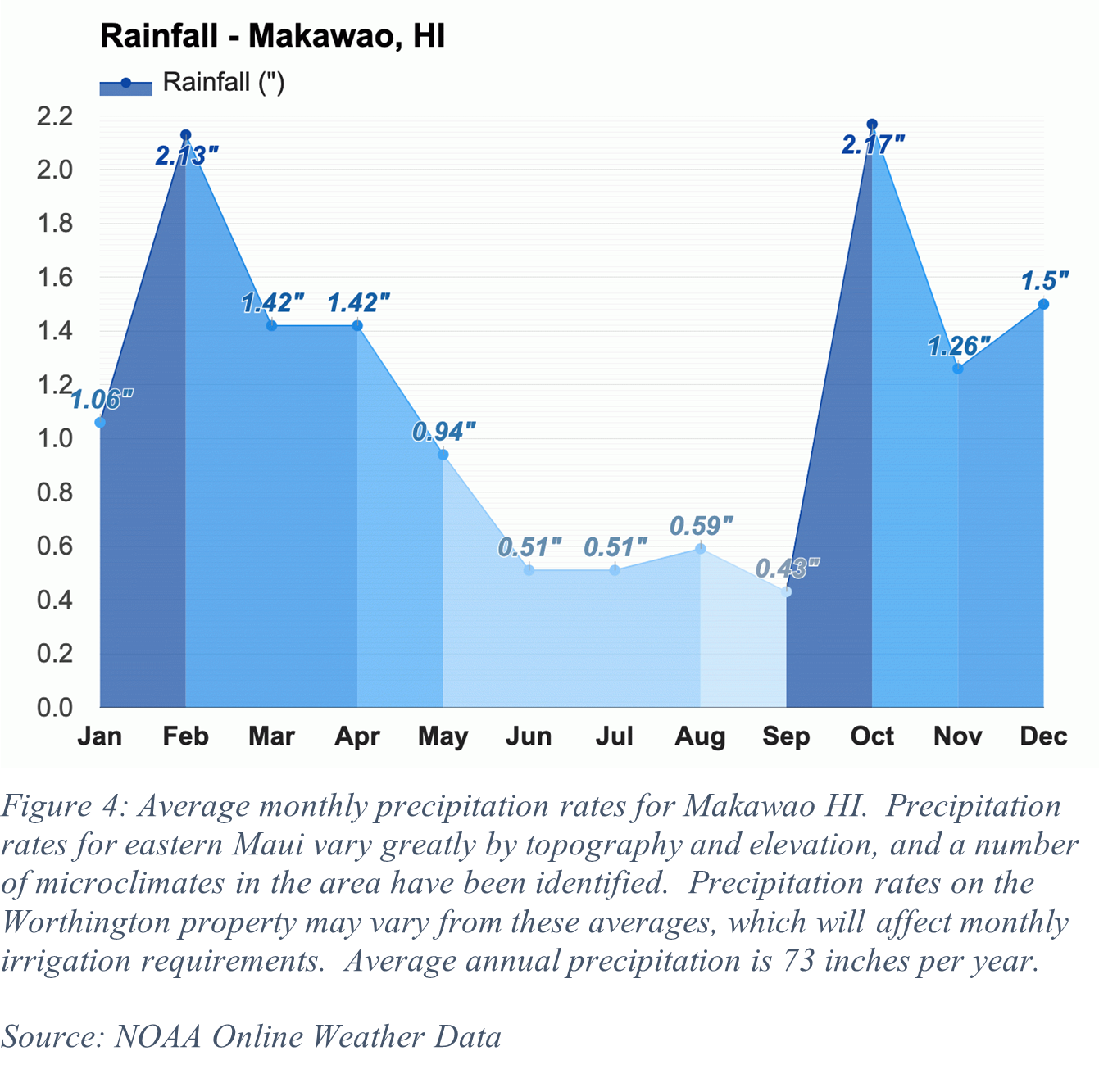 |
Preparation of the site will require removal of the existing pasture, soil amendments, and construction of an irrigation system. These disturbances will create an opportunity for invasive and other undesirable vegetation to colonize the site. The use of a cover crop for weed control, nutrient cycling, aesthetics, and pollinator habitat is highly recommended
Hubam White Sweet Clover is a deeply rooted biennial legume used to add nitrogen and organic matter directly to the root zone when used as a roational cover crop. An informational sheet from the University of Hawaii Extension is included in Appendix B
Management and Cultural Practices:
The information sheets included in Appendix B provide specific information on planting techniques, fertilizer requirements, and crop management. Additional information can be found on several internet sites, including plantithawaii.com and ctahr.hawaii.edu/freepubs. |
Percentage farm coverage
Property = 3.616 acres (157,513 sq. ft.)
Orchard/Farm area = 1.95 acres ((84,942 sq. ft.)
Percent property used for farming: 85%
Percent property for residential development: 15%
-------------------------
Appendix A
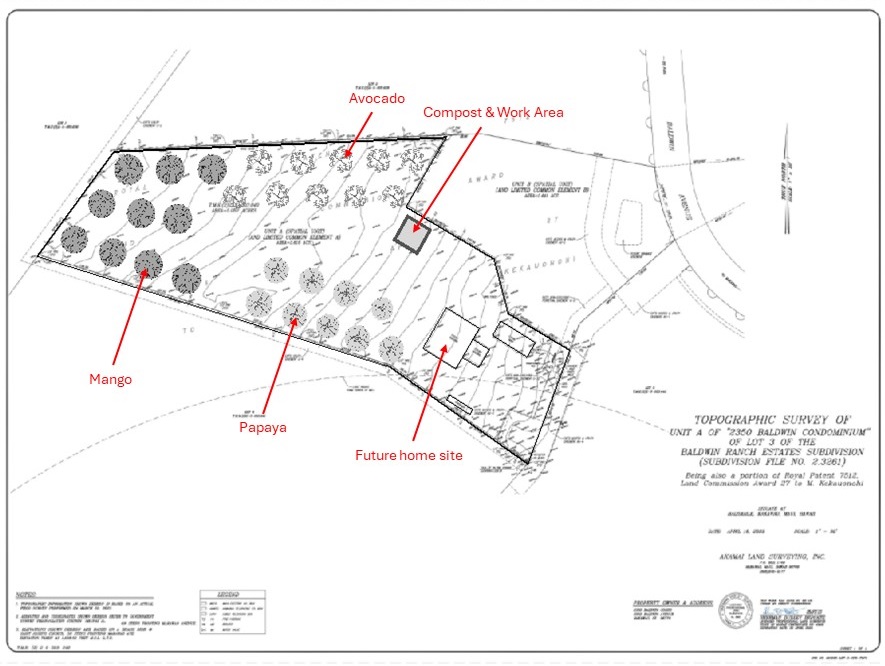
-------------------------
Appendix B: General Crop Information
-------------------------
Appendix C: Property Photos
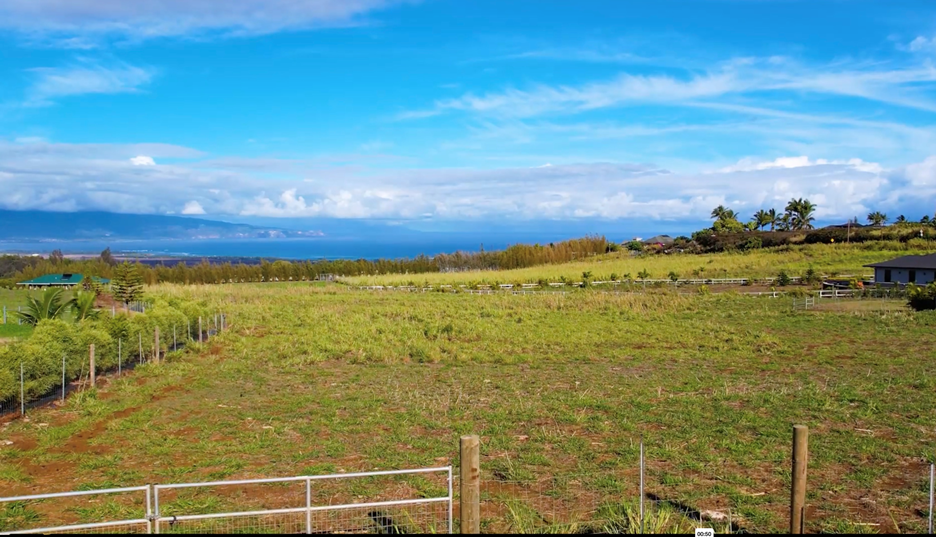
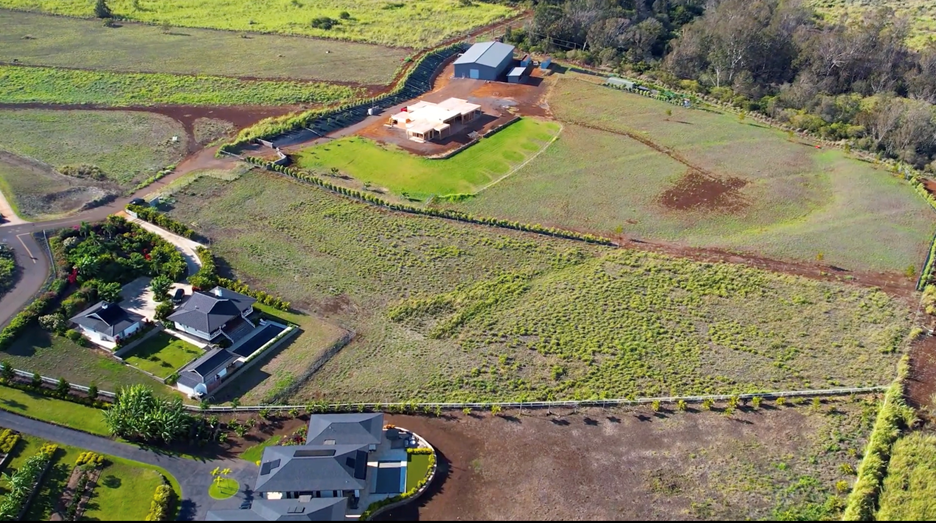
|